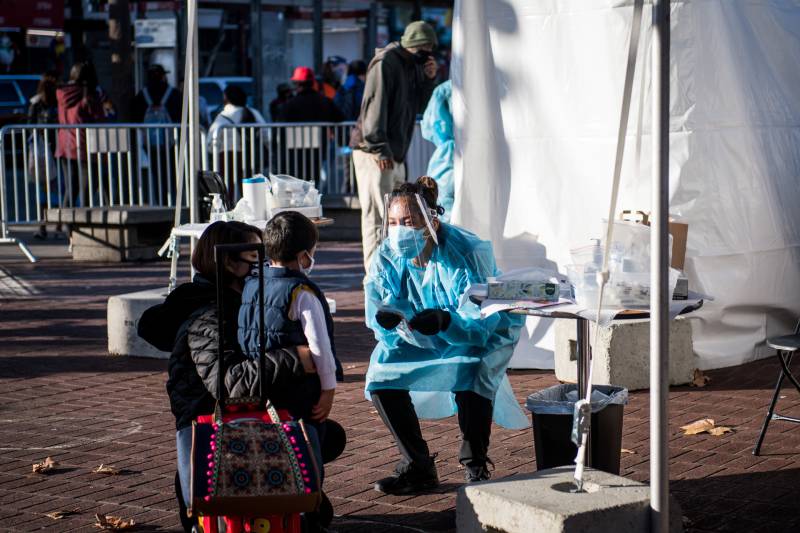Update, 5 p.m. Friday:
Bay Area health officials from five counties announced Friday that they're implementing a new stay-at-home order ahead of the state's timeline announced by Gov. Gavin Newsom on Thursday.
The restrictions will affect residents and businesses in Alameda, Contra Costa, Marin, San Francisco and Santa Clara counties. The order will last until Jan. 4, 2021.
Indoor and outdoor playgrounds, personal care services, hair salons, movie theaters, museums and bars must close. Gathering with anyone outside of your household is not allowed, even outside. All non-essential travel is not allowed.
Indoor retail and grocery stores can operate at 20% capacity, and restaurants can stay open for take-out, delivery and pick-up.
The stay-at-home order will go into effect on the following days:
- Contra Costa County: Sunday, Dec. 6
- Santa Clara County: Sunday, Dec. 6
- San Francisco County: Monday, Dec. 7
- Alameda County: Monday, Dec. 7
- Marin County: Tuesday, Dec. 8
See more information about what the new stay-at-home order means.
Original post:
Gov. Gavin Newsom on Thursday announced a sweeping new regional stay-at-home order that will force the shutdown of many businesses and activities in vast regions across California where hospital intensive care units are nearing capacity due to soaring COVID-19 rates.

